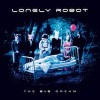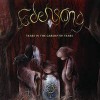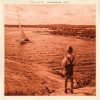Loading cart

1000 Hands: Chapter One

This was released in 2019 and only available from Jon Anderson's website. It is now in wider distribution.
"Jon Anderson’s solo career has been reborn and reborn again throughout his career. From mystic prog to folk to rock to pop to new age to classical to Shaman to Latin to Irish and back to prog, Anderson hasn’t shied away from exploring and embracing countless styles and genres. Since his acute respiratory failure caused his departure from Yes (or Yes from him), Anderson has slowly returned to recording in the past decade. 2010’s “Survival and Other Stories” was somewhat satisfying but revealed the lingering fragility of his voice. The follow-up, a 20-minute orchestral piece titled “Open” was an impressive foray back into the classical world with a stronger vocal performance. Several years later, his collaboration with Roine Stoltreturned Anderson to full-on prog, essentially reclaiming his Yes roots. Now with 1,000 Hands: Chapter One we have a genuine Jon Anderson solo album, his voice ever-stronger and even seeming to reach higher peaks, if that were possible.
For fans of Anderson’s solo career, this latest release is cause for celebration. For the most part, this is notYes music and fans of that band may have mixed responses if they go in with that expectation. But for those who embrace Anderson’s diversity and wide-ranging styles, this is an album worth waiting for. The role of producer and arranger is a crucial one and in Michael Franklin, Anderson has found a simpatico musical brother. Musically, the trio of Michael Franklin (keyboards), brother Tim Franklin (bass) andTommy Calton (guitar) helm the bulk of this album. Although there are countless guest musicians who have their parts mixed in throughout each track (perhaps not quite 1,000 hand’s worth, but you get the idea), the listener can rest happily knowing that this core trio is going to do justice to Anderson’s creative designs.
After a signature opening chime, the brief track “Now” opens the album with an understated but promising delivery, accompanied only by Calton’s acoustic finger-picked guitar. This prelude opens into the first proper track “Ramalama”, launched by Anderson’s multi-tracked vocals a la “We Have Heaven”. As the polarities of banjo and electronic drums kick in, we have a re-imagined Anderson classic, with one foot solidly in the future while the other is rooted in the past. Overtone throat singers, violins, handclaps and a bouncy bass line all contribute to make this a truly thrilling opening to the album. We stay on a high with“First Born Leaders”, which could naturally be a sequel to “Don’t Forget (Nostalgia)” from the Song of Sevenalbum. Indeed, those two songs would segue easily for a medley, from their tempos to their bass lines and horns. Speaking of bass, one of the cameo’s on this song is from none other than Chris Squire, though you likely wouldn’t have guessed it from the tone of the bass, and also from the fact that Tim Franklin adds fretless bass riffs on top, making it hard to discern how much of the bass is actually played by Squire. This approach happens again with the incredible Zap Mama, whose voices are mixed in with not one but two additional “choirs”, labeled as the Solar Choir and Voices of Lindahl. Each choir is fabulous in its own right, but the mixture of all three of them together takes away some of the impact of Zap Mama’s notable inclusion. The full-on percussion for this breezy track is ably supplied by Matt Brown and Steady Joseph along with Pat Frost on steel drums.
If it sounds like a lot going on with these tracks, it is. Happily, the mix is very well done and the end result feels like a joyous celebration. Still, this is representative of how the album has been created: incorporate the notable VIP guests as much as possible, but supplement their parts with the core studio band as needed to create a seamless tapestry. Given that these star guests have recorded their cameos over the span of decades, it makes sense that their original recordings wouldn’t always fulfill the potential of where the arrangements wanted to go as the songs developed over the years, and that additional studio musicians would be needed to fully realize the finished song. But the downside of this means that if the listener was hoping to enjoy a final lost-recording of Squire on bass, they may feel a bit let down in realizing that they’re unsure about what notes he actually played due to multiple bassists on the same track, even if the end result is a rewarding recording.
“Activate” is the first of two longer songs which clock in at 9:24. Notable on this sprawling track is the presence of the other Anderson: Ian on flute. Unlike the anonymous nature of bass and drums lines in regards to special guests, Ian’s playing sticks out in the best of ways, his signature playing a delight to hear contrasted to Jon’s voice. The three guest guitarists don’t fare as well, with Steve Morse, Larry Coryell andPat Travers suffering the dynamic mentioned above where it’s unclear how much of their playing is actually in the final mix as opposed to the ever-present skilled house-band guitarist Tommy Calton. Alan White is also credited on this track, though with Steady Joseph on percussion it is again hard to discern exactly where Alan is in the mix. These vagaries aside, it’s an excellent piece of music in the canon ofAnderson. The vocal melody of the verse is slightly reminiscent of Yes’ song “We Agree”, later moving to engaging choruses with a spiritually-uplifting vision.
Anderson ups his positive-feel-good bar with the infectious “Makes Me Happy”. From Beat Box to ukulele toTower of Power horns, this reggae-inspired is about as happy a song as Anderson has written, not unlike“Everybody Loves You” from Song of Seven. Again, kudos go to producer Michael Franklin and his brotherTim for giving some class and organic feeling to what could have otherwise been a sappy Anderson ditty, but instead is a celebrative affirmation. In all honesty, the fact that this reviewer first experienced this song while walking on the idyllic beaches of Mexico might have something to do with this positive review, too.
More Song of Seven references come in the next two songs: a beautifully orchestrated “variation” of the opening track “Now” (though much too short) with gorgeous violin and cello, and then the ballad “I Found Myself” where Tim Franklin’s fretless bass channels John Giblin’s amazing bass lines that he offered on songs like “Days” from nearly 40 years ago. A duet with Anderson’s wife Jane (“Jannnneeeeeee”), this is a beautiful love song, though the melody might touch a tad close to the classic “Blue Moon”. Featuring Jerry Goodman’s violin soling, it closes with a transcendent chord sequence and rhythmic Anderson vocals.“Twice in a Lifetime” is another ballad but again Michael Franklin keeps the arrangements interesting and tasteful, this time adding harpsichord and accordion as well as lovely violin soloing from Charlie Bisharat.
We’re ready for something more rhythmic at this point, and Anderson & Franklin come up with a doozy in“WDMCF (Where Does Music Come From)”. Ironically only credited to vocals and keyboards, this song offers plenty of beats as it dances along the lines of electronica, perhaps coming to a dance hall near you if DJ’s pick it up. Although perhaps not to everyone’s tastes, explorations like this that show that Anderson isn’t afraid of embracing genres that he usually wouldn’t be associated with, and he actually succeeds.
The mini epic “Come Up” is perhaps the centerpiece of this album, boasting such luminaries as Billy Cobham, Chick Corea, Larry Coryell, Stu Hamm, Chris Squire, Zap Mama and Jon’s recent collaboratorJean Luc Ponty. Corea is especially prominent in the mix, transporting the song to a whole different level than we usually hear from Anderson solo outings. While it’s impossible to say how much of the late Squireis represented in the final mix versus the ever-present Tim Franklin, the song is strongly rooted in its bass presence, along with the spacious percussion of Cobham and Joseph. It may not achieve the status of being a sustaining classic, but it is an adventurous piece that is very rewarding to experience in Anderson’s elder years.
While “Come Up” would have been a triumphant ending, a final reprise of the “Now” theme closes the album, most notable by adding a completely new section which features Steve Howe on classical guitar. WhileHowe, Anderson sings “Never forgot that we are friends…here I am singing as you play. Memories sing in this lifetime, never forgot.” The simplicity packs a nostalgic punch and the listener may find a tear falling in sentimental love and hope. To say it’s a heartwarming way to end the album would be an understatement, and as the final seconds close with the chime that started the journey, we can find much gratitude that this is titled Chapter One. If additional Chapters do indeed arise in the coming years, this may signal yet another Anderson rebirth once again." - Sonic Perspectives




















